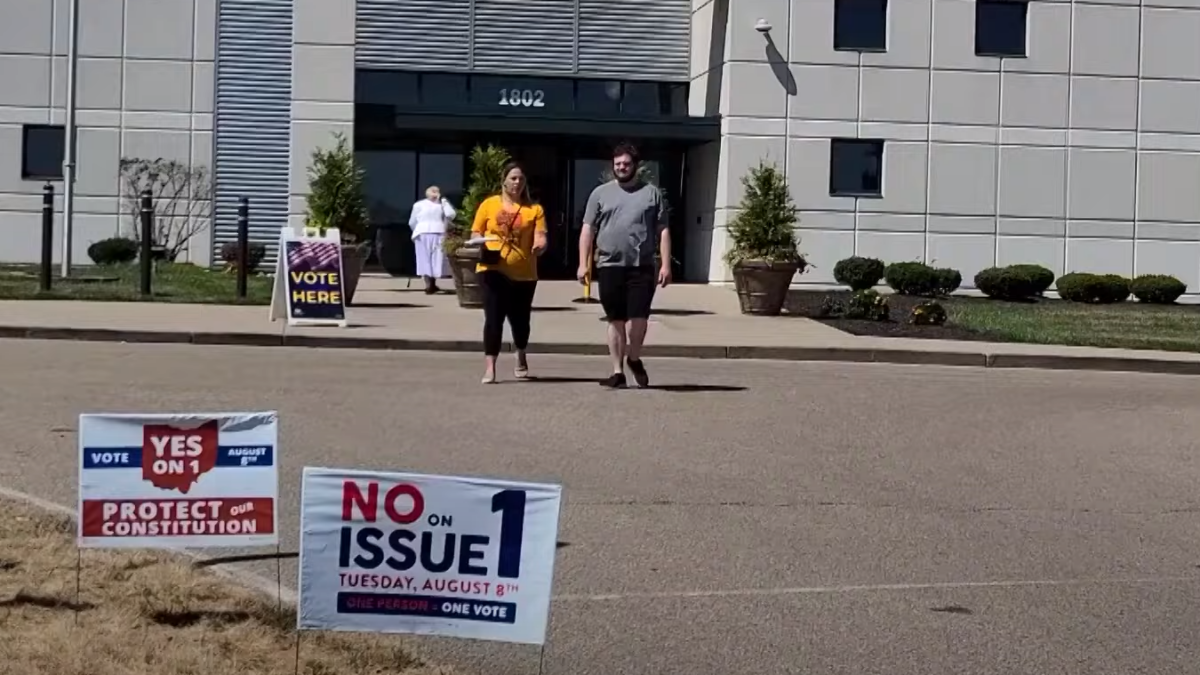Though the results of last week’s ballot measure in Ohio are being billed as a loss for the pro-life movement, they also present opportunities the movement should be enthusiastic to embrace.
Patrick T. Brown, a fellow at the Ethics and Public Policy Center, drove this point home with a tweet that got some attention: “The Ohio result tonight … needs to be a five-alarm fire for the pro-life movement.”
In other words, it has become increasingly clear, in Michigan, in Kentucky, and now in Ohio, that a defensive posture of the movement is unsustainable. Since the defeat of Roe by Dobbs, the pro-abortion movement has fought for what they brand as choice, as perverted a conception as it is. And pro-life activism on the state level has relegated itself to the position of reflexively responding to coordinated pro-abortion activism, offering doomed procedural special election initiatives as a foil to clear, yet seriously flawed, messaging.
As these state losses compile, the momentum of pro-life voters, legislatures, and the movement dwindles. The pro-life movement finds itself in the position of separating the strategic wheat from the chaff.
On the level of procedure, one objective should be a no-brainer for state-level movements: preventing deep-pocketed national organizations from initiating constitutional amendments.
The largest contributor to the One Person One Vote Campaign, the group organized under the Kettering Foundation that campaigned against Issue 1, was the Washington, D.C.-based Sixteen Thirty Fund, which Politico described in 2021 as “a left-leaning, secret-money group.” Sixteen Thirty poured more than $2.6 million into the campaign. The San Francisco-based Tides Foundation donated more than $1.8 million. The Advocacy Action Fund in Burlingame, California, gave $1 million. And so on.
The financial incentives would be muted were it not for the constitutional amendment regime in Ohio and 17 other states. Those 18 jurisdictions permit citizen-initiated constitutional amendments, which require a minimum number of signatures from registered voters in the state. This system is especially sensitive to the influence of organizations that function outside the state. Because money buys the popular vote, millions of dollars flooded into Ohio this year to ensure that abortion codification would be on the ballot in November.
To curb this influence, pro-life legislatures that currently practice citizen-initiated constitutional amendments such as Texas, Iowa, and Kansas could move to require legislative referrals for their constitutional amendments. Any perception of legislatures bending to the wishes of their lobbyists pales in comparison with the reality of faraway corporate interests gathering signatures for so-called grassroots operations.
But again, this defensive posture cannot define the pro-life movement on either the national or state levels. A more straightforward strategy is required.
Pro-abortion activists have flocked to Ohio, a state that former President Donald Trump won by 8 points in both 2016 and 2020, for a reason: The state is a symbol of a burgeoning pro-life coalition. In 2019, Ohio was one of the first states to enact a heartbeat bill, which banned abortion about six weeks after conception. The Buckeye State is represented in Washington’s upper chamber by J.D. Vance, who was quick to endorse Americans United for Life’s Make Birth Free initiative, a proposal introduced this January that would subsidize the costs of childbirth for American families.
By contrast, the pro-life movement has been hesitant to take on the citadels of pro-abortion activism through political action. The legislators and governors of California, Oregon, New York, and Maryland will not take on strict abortion bans for the protection of preborn human life. But those states can be positively reformed in other ways.
Even if the state of Ohio does not fall to moneyed special interests this November and its voters reject a push to codify abortion in their state’s Constitution, the pro-life movement should focus on pursuing ballot measures that would create abortion alternative funds for pregnant mothers and their children. These states with Democratic majorities, which have marketed themselves as havens for abortion, could be tested with a proactive strategy with the aim of supporting women.
As long as these electoral wins for pro-abortion activists continue, more pro-life Americans will feel that a wet blanket has been thrown over the political and cultural movement to which they feel most attached. The current reactive path is unsustainable for all stakeholders in the pro-life movement: legislators, donors, state and national organizations, and the strong base of patriotic, single-issue voters who have held a candidate’s position on abortion as a definitive litmus test for as long as they have walked into the polls. The results of the current path cannot be ignored, but thankfully there is another way.









